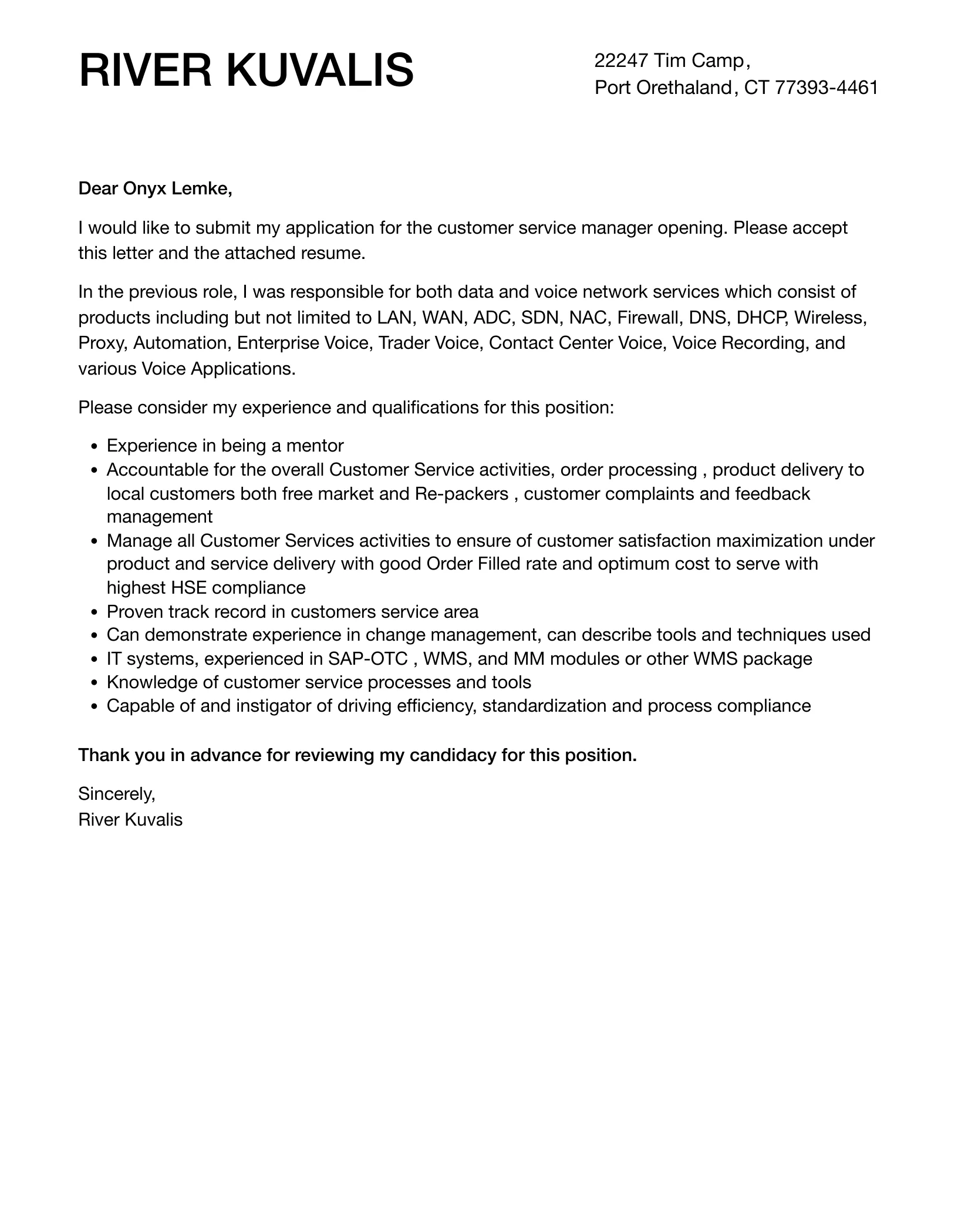What is a Customer Service Manager Cover Letter
A customer service manager cover letter is a crucial document in your job application process, serving as your introduction to a potential employer. It’s more than just a formality; it’s your opportunity to showcase your personality, skills, and passion for the role. A well-crafted cover letter complements your resume, providing context and detail that might not be apparent at a glance. It allows you to highlight your most relevant experiences and achievements, demonstrating how you can contribute to the company’s success. This document is your first impression, so make it count. It should be tailored specifically to the job you’re applying for, reflecting your understanding of the company’s needs and how you can address them. This targeted approach shows initiative and genuine interest, setting you apart from generic applications. By carefully crafting this letter, you increase your chances of landing an interview and ultimately securing the position.
Key Components of a Customer Service Manager Cover Letter
A compelling customer service manager cover letter is structured to engage the reader from the beginning. Each section should be carefully considered and crafted to create a narrative that highlights your strengths and qualifications. A well-organized letter is easy to read and understand, ensuring that your key points are not missed. Begin with a strong opening that immediately grabs the reader’s attention, followed by sections that detail your relevant skills, experiences, and accomplishments. Remember, the goal is to demonstrate how your capabilities align with the job requirements and company values. End with a professional closing that reinforces your interest and encourages further action. A well-structured cover letter is a powerful tool for making a positive impression and advancing your job application.
Header and Contact Information
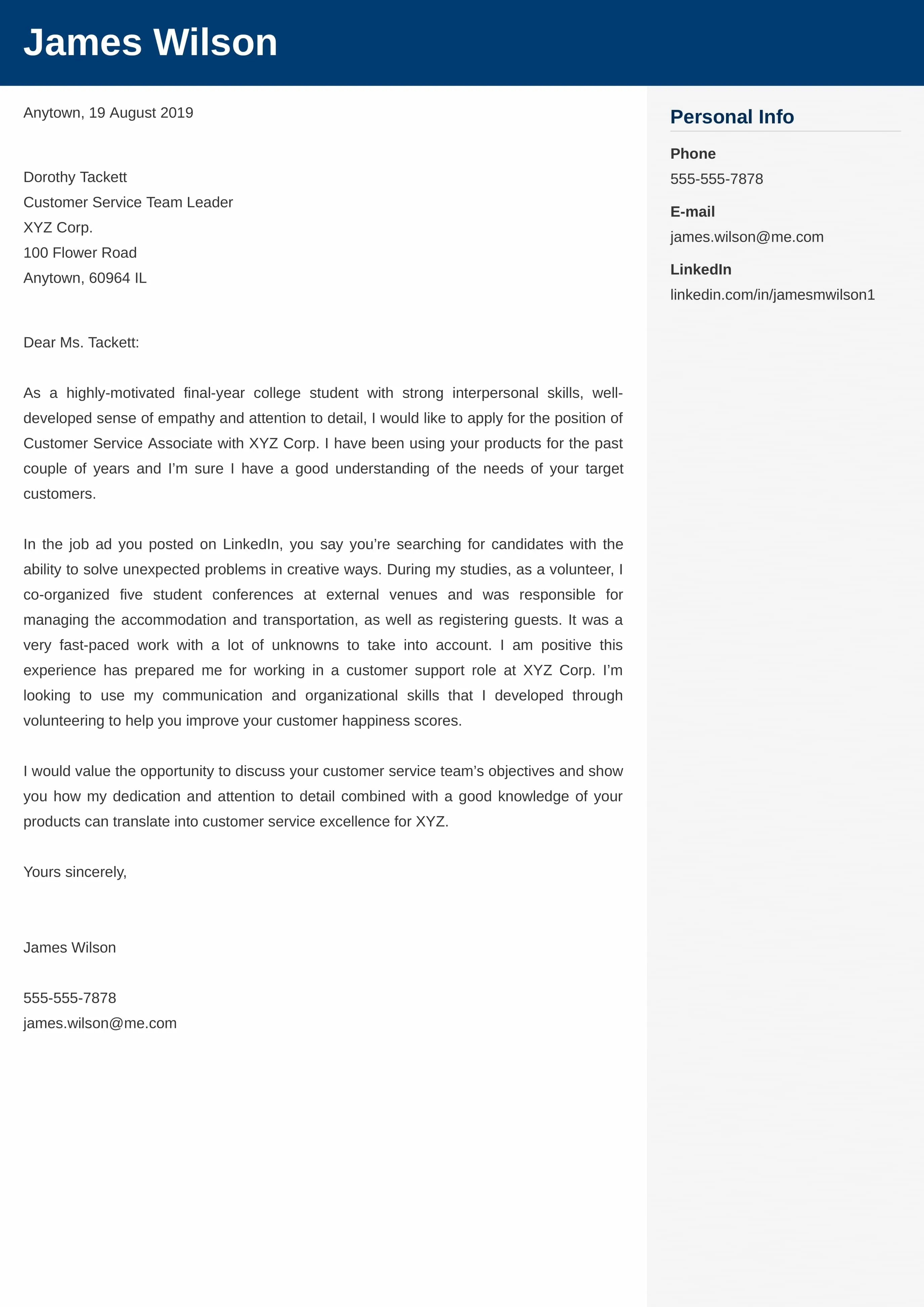
The header of your cover letter should include your full name, professional title (or the position you’re applying for), phone number, email address, and optionally, your LinkedIn profile URL. Ensure that your contact information is accurate and up-to-date. The layout should be clean and easy to read, reflecting your attention to detail and professionalism. Place your header at the top of the document, either aligned to the left or centered. The use of a professional email address is essential; avoid informal or outdated addresses. Consider using a font that is both legible and professional, such as Arial, Calibri, or Times New Roman. This consistent and clear presentation sets the tone for the rest of your cover letter, showing the hiring manager that you are organized and prepared.
The Salutation
The salutation is your first interaction with the hiring manager, making it crucial to set a positive tone. If possible, address the letter to a specific person. Research the hiring manager’s name, title, and preferred pronouns. A personalized greeting such as ‘Dear Mr. Smith’ or ‘Dear Ms. Jones’ shows you’ve done your homework and are attentive to detail. If you’re unable to find a specific name, use a professional alternative like ‘Dear Hiring Manager’ or ‘Dear [Company Name] Recruiting Team.’ Avoid generic greetings like ‘To Whom It May Concern,’ as they can make your letter feel impersonal. Ensure the spelling and title are correct to show respect and professionalism. A well-chosen salutation can immediately capture the reader’s attention, setting a positive tone for your cover letter and demonstrating your consideration for the recipient.
Writing a Compelling Opening Paragraph
Your opening paragraph is a critical opportunity to grab the hiring manager’s attention and establish your interest in the position. Start by clearly stating the position you are applying for and where you found the job posting. Follow this with a brief, engaging statement about why you are interested in the role and the company. It’s important to show genuine enthusiasm and a connection to the company’s mission or values. Highlight a key achievement or skill that aligns with the job requirements to pique the reader’s interest immediately. Avoid generic statements that could apply to any job; instead, tailor your opening to reflect your unique qualifications and understanding of the company’s needs. The goal is to create a positive first impression and encourage the reader to continue reading, showcasing your motivation and suitability for the role.
Highlighting Relevant Skills and Experiences
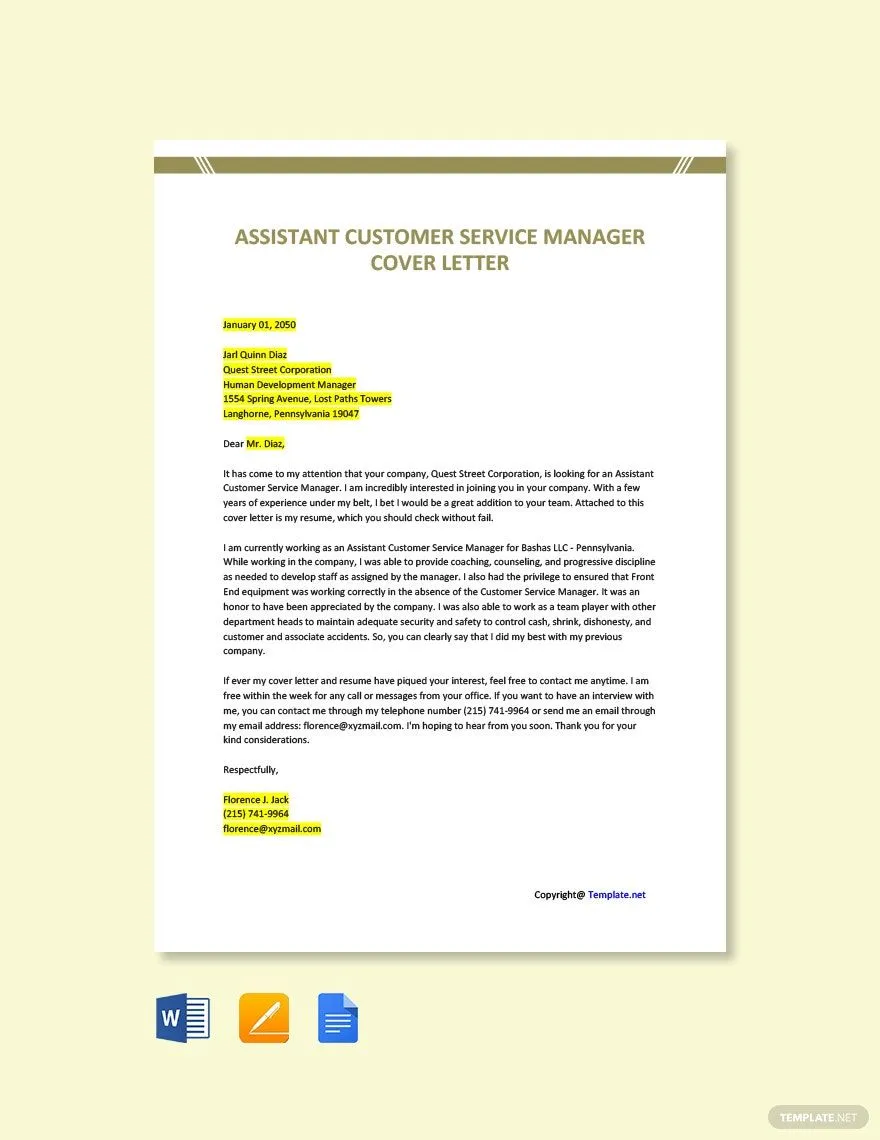
In the body of your cover letter, you must focus on demonstrating how your skills and experiences align with the job requirements. Review the job description carefully and identify the key qualifications the company is seeking. Use specific examples to showcase your ability to meet these needs. Instead of simply listing your skills, provide context and demonstrate how you have applied them in the past. For example, if the job description mentions ’team leadership,’ describe a situation where you successfully led a team to achieve a specific goal. Use strong action verbs to describe your accomplishments and quantify your results whenever possible. Your examples should be clear, concise, and relevant, painting a vivid picture of your capabilities and how you can contribute to the company’s success. This section should be the heart of your cover letter, providing concrete evidence of your suitability for the role.
Quantifiable Achievements
Quantifying your achievements is a highly effective way to demonstrate your value and make a strong impression on the hiring manager. Rather than making general statements about your skills, provide specific metrics and data to support your claims. For example, instead of saying, ‘Improved customer satisfaction,’ state, ‘Increased customer satisfaction scores by 15% within six months.’ Use numbers, percentages, and other measurable data to showcase your impact on previous roles. Consider using the STAR method (Situation, Task, Action, Result) to structure your examples, providing context and illustrating the steps you took to achieve your results. Quantifiable achievements not only prove your capabilities but also provide tangible evidence of your contributions. This approach shows you’re results-oriented and focused on delivering value.
Showcasing Your Leadership Abilities
For customer service manager roles, showcasing your leadership abilities is critical. Highlight instances where you’ve successfully led, motivated, and guided teams. Provide specific examples of how you’ve fostered a positive and productive work environment. Describe any training programs you’ve developed or implemented, or any strategies you’ve used to improve team performance. Explain how you’ve handled difficult situations or resolved conflicts within a team. Demonstrate your ability to make decisions, delegate tasks, and provide constructive feedback. If you have experience in coaching or mentoring team members, be sure to include those details. Your goal is to paint a picture of you as a decisive leader who can inspire and manage a team effectively. This can showcase your ability to lead others to achieve common goals and boost overall customer service standards, a key element in any manager role.
Expressing Enthusiasm for the Role and Company
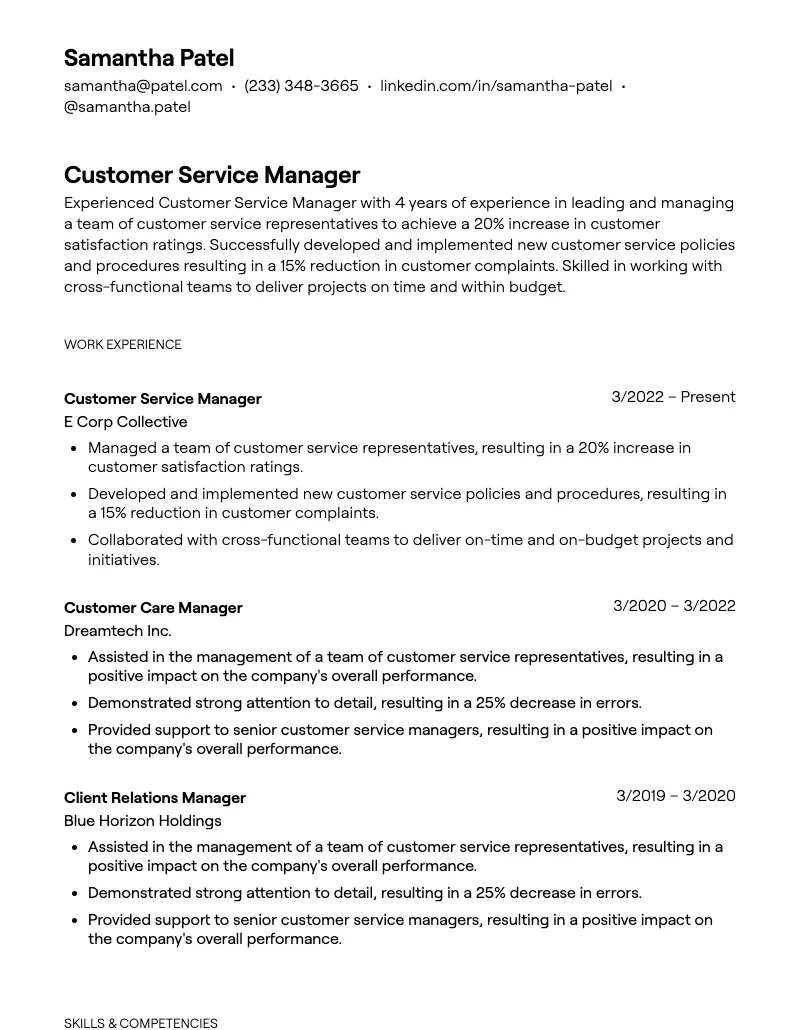
Expressing genuine enthusiasm for the role and the company is vital to making a positive impression. Research the company thoroughly and demonstrate your understanding of its mission, values, and recent accomplishments. Tailor your letter to show how your skills and experience align with the company’s specific needs and goals. Explain why you are excited about the opportunity to work there and what you hope to contribute. Mention specific projects or initiatives that resonate with you, showing that you’ve taken the time to learn about the company. Avoid generic statements and show a genuine interest in joining the team. Your enthusiasm will not only make your application more appealing but also signal your commitment and dedication to the role. This will set you apart from other candidates, demonstrating that you are invested in your future with the company.
Mentioning Customer Service Experience
Your customer service experience is the core of your application. In your cover letter, focus on the specific aspects of your background that relate to the customer service manager role. Highlight your experience in managing customer interactions, resolving complaints, and ensuring customer satisfaction. Discuss any strategies you’ve used to improve customer service processes, such as implementing new technologies or training programs. Share specific examples of how you have handled difficult customers or resolved complex issues. Mention any achievements related to reducing customer churn, improving customer retention rates, or increasing customer loyalty. Demonstrate your ability to handle customer-facing situations with empathy, professionalism, and a focus on solutions. Show the hiring manager that you possess not only the necessary skills but also the passion and commitment to make a difference in the customer experience.
Demonstrating Knowledge of Customer Service Principles
Demonstrating your knowledge of customer service principles is critical for showcasing your expertise. Mention your understanding of key principles like active listening, empathy, and problem-solving. Refer to any customer service methodologies you are familiar with, such as the Net Promoter Score (NPS) or the Customer Effort Score (CES). Explain how you have applied these principles in previous roles to improve customer satisfaction, reduce complaints, and increase customer loyalty. Show your understanding of best practices in customer service, such as personalized communication, proactive support, and efficient issue resolution. Illustrate your commitment to maintaining a customer-centric culture and your ability to train and guide teams in delivering exceptional customer service. Displaying this knowledge emphasizes your readiness to take on the responsibilities of a customer service manager.
Tailoring the Letter to the Job Description
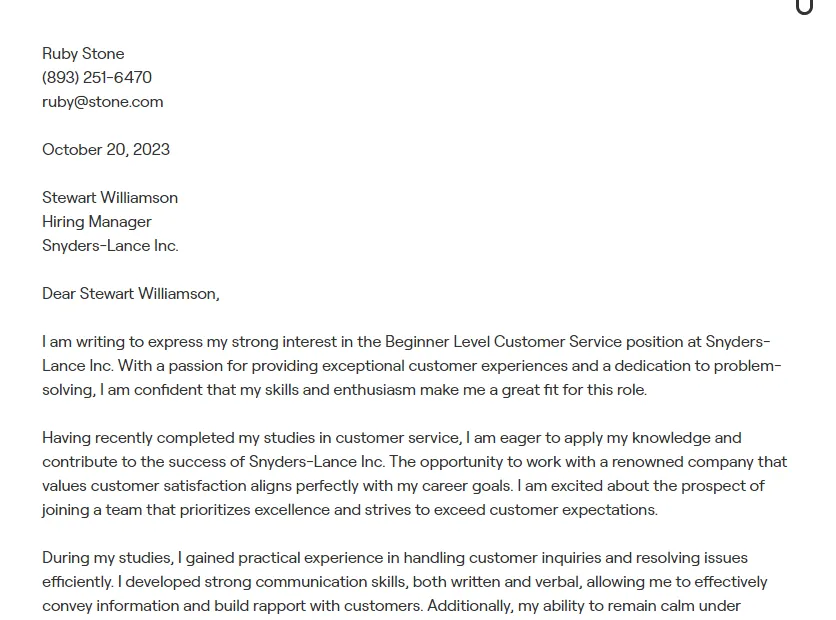
Tailoring your cover letter to the job description is a critical step in making your application stand out. Carefully review the job description and identify the key requirements, skills, and qualifications the company is seeking. Customize your cover letter to address these specific needs, highlighting how your experience aligns with the role’s demands. Use the same keywords and phrases from the job description to demonstrate your understanding of the role and your ability to meet its challenges. Avoid sending a generic cover letter; instead, tailor each application to the specific job requirements. This shows the hiring manager that you’ve taken the time to understand the role and are genuinely interested in the opportunity. It demonstrates initiative and a proactive approach, setting you apart from candidates who submit generic applications. It’s a key part of showing why you are the best fit for the position.
Proofreading and Editing
Proofreading and editing your cover letter is essential for ensuring professionalism and attention to detail. Errors in grammar, spelling, and punctuation can damage your credibility and create a negative impression. Before submitting your cover letter, carefully review it multiple times. Use grammar and spell-checking tools, but don’t rely on them entirely. Read your cover letter aloud to catch any awkward phrasing or mistakes that you might miss when reading silently. Ask a friend, family member, or career counselor to review your letter as a fresh pair of eyes can often catch errors you may have overlooked. Ensure the formatting is consistent and the layout is visually appealing. A polished, error-free cover letter demonstrates that you are meticulous and care about the details, which are crucial qualities for a customer service manager.
Common Mistakes to Avoid
Avoiding common mistakes can significantly improve your cover letter and enhance your chances of getting an interview. Be aware of the pitfalls that can undermine your application and make a negative impression on the hiring manager. This section provides essential guidance to help you avoid these errors and create a cover letter that showcases your strengths and qualifications effectively.
Generic Greetings
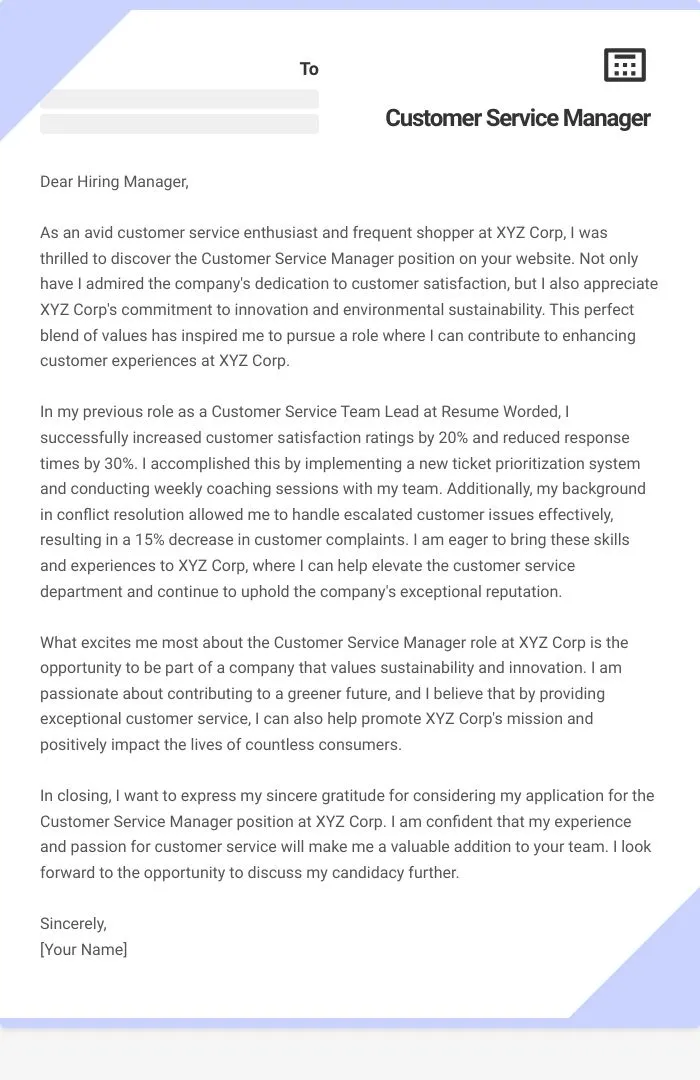
Using generic greetings like ‘To Whom It May Concern’ or ‘Dear Sir/Madam’ can make your cover letter feel impersonal and demonstrate a lack of effort. Take the time to research the hiring manager’s name or use a professional alternative like ‘Dear Hiring Manager.’ A personalized greeting shows that you have taken the initiative to find out who will be reading your letter, which immediately makes a better impression. Always aim for a personal touch to make your application more engaging and show your proactive approach.
Focusing on What You Want Instead of What You Offer
Avoid making your cover letter all about what you want from the job. Instead, focus on what you can offer the company. Highlight how your skills, experience, and achievements align with the company’s needs and goals. Frame your statements to reflect the benefits of hiring you and the value you can bring to the team. Show that you understand the challenges the company faces and how you can help solve them. Shift your focus from ‘I want’ to ‘I can contribute’ to make your cover letter more compelling and demonstrate your understanding of the company’s needs.
Failing to Quantify Accomplishments
Avoid making vague statements about your accomplishments. Instead, quantify your achievements by providing specific metrics, such as percentages, numbers, or dollar amounts. For example, instead of saying, ‘Improved customer satisfaction,’ say, ‘Increased customer satisfaction scores by 15% within six months.’ Quantifiable achievements demonstrate your impact and provide concrete evidence of your value. Using data and metrics provides credibility and makes your claims more compelling and easier to understand.
Using Excessive Jargon
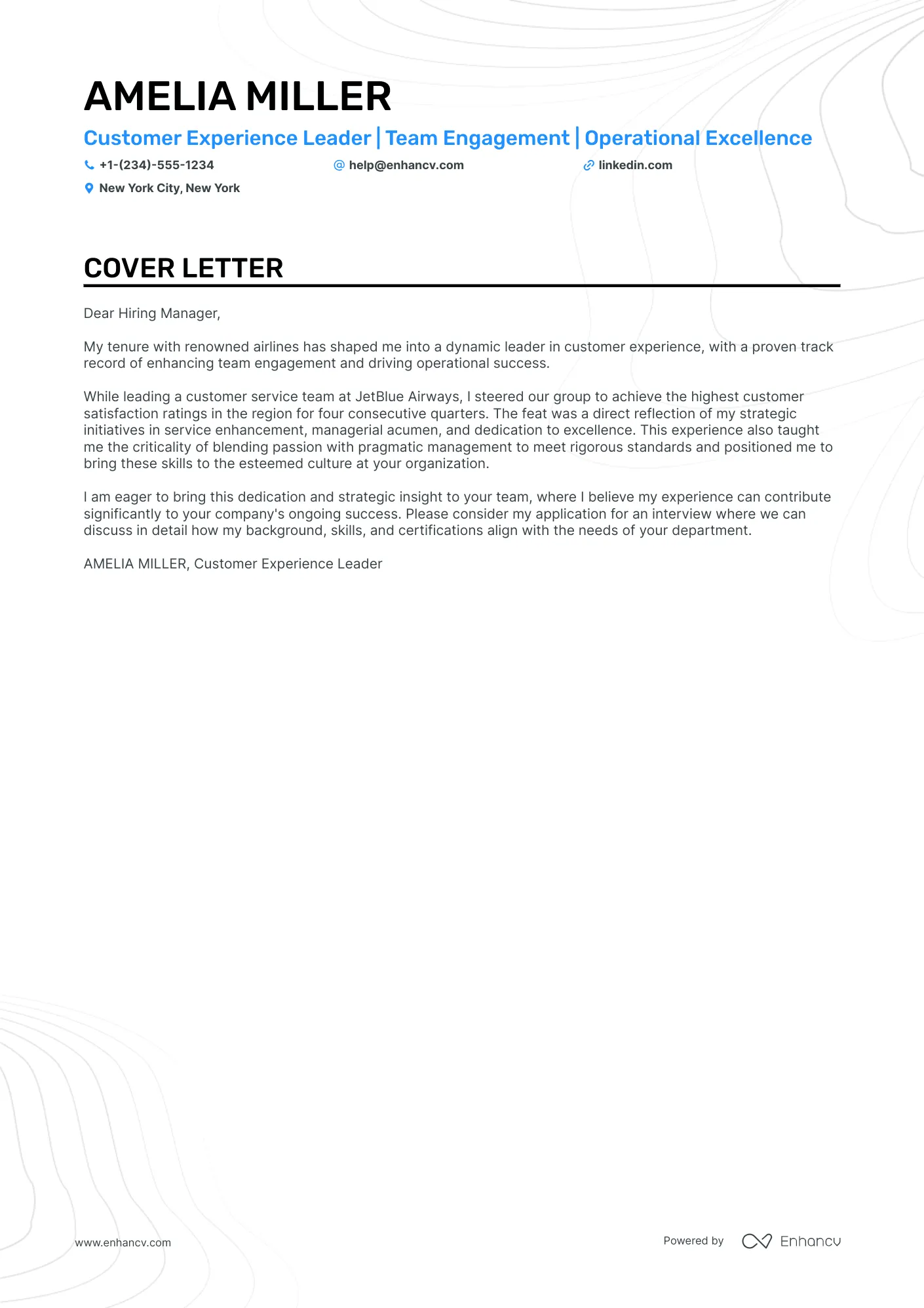
Avoid using excessive jargon or technical terms that the hiring manager might not understand. Keep your language clear, concise, and easy to read. Use plain language and focus on communicating your skills and experience effectively. Write in a way that is accessible to a broad audience. Your aim is to present your qualifications in a way that is simple and easy to grasp, so the hiring manager can quickly see your abilities and fit for the role.
Formatting Errors
Formatting errors can detract from the professionalism of your cover letter. Ensure your letter is well-formatted with a clear and consistent layout. Use a professional font, such as Arial, Calibri, or Times New Roman. Maintain consistent spacing and margins throughout the document. Proofread carefully to catch any spelling or grammatical errors. A well-formatted cover letter shows attention to detail, which is essential in any customer service role. Using correct formatting will demonstrate your professionalism.
Finalizing Your Cover Letter
Finalizing your cover letter is an important step in ensuring it’s ready for submission. This involves paying close attention to the formatting, layout, and overall presentation of your document. It’s also crucial to include a clear call to action and to conduct a thorough review before submitting your letter. This final process ensures your cover letter is polished, professional, and effectively communicates your qualifications and enthusiasm for the role.
Formatting and Layout
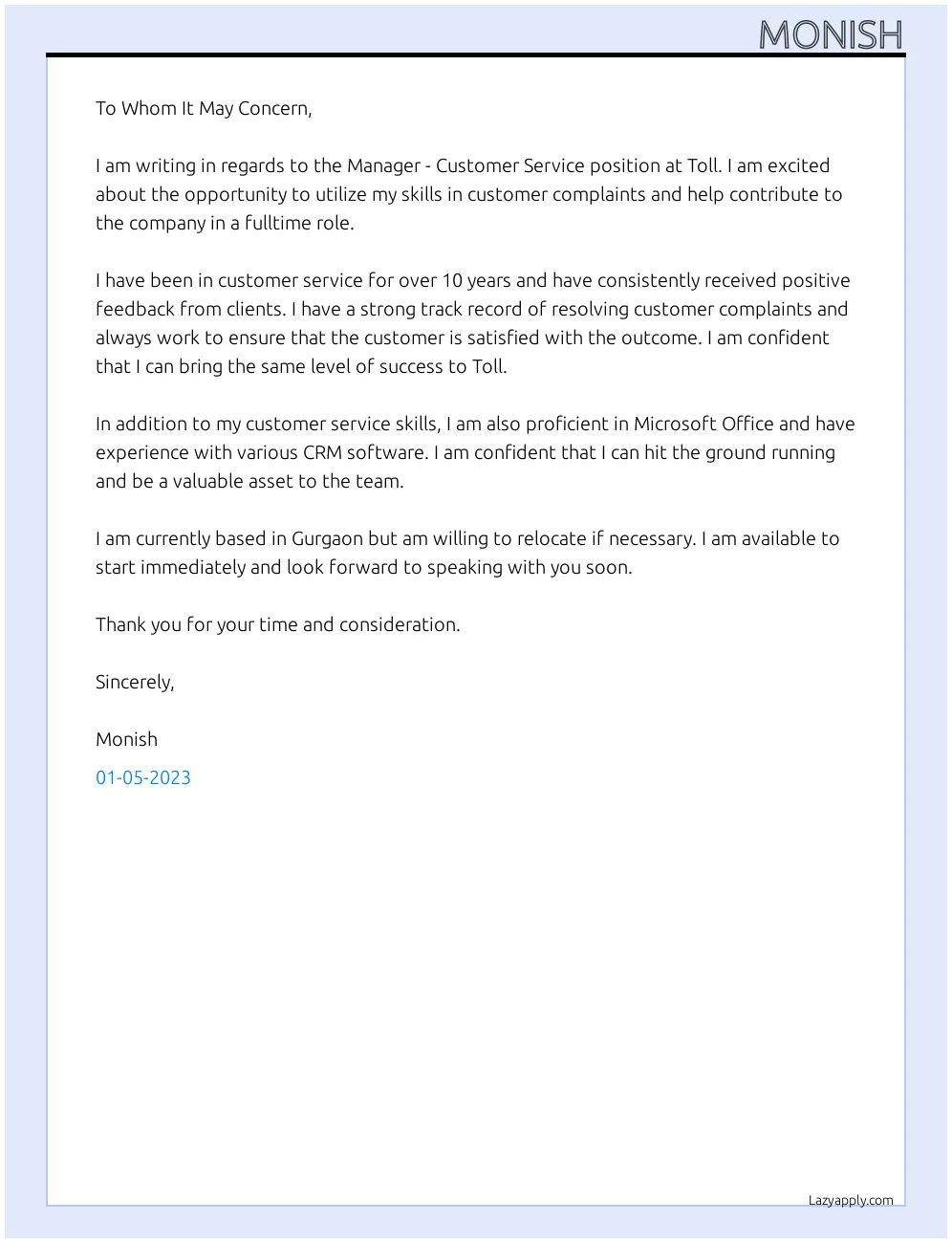
The formatting and layout of your cover letter are critical for readability and a professional appearance. Choose a simple and elegant font such as Arial, Calibri, or Times New Roman. Maintain a consistent font size, typically 11 or 12 points. Use single-line spacing with a blank line between paragraphs to make the text easy to scan. Set clear margins, usually one inch on all sides. Use left alignment for the body of the letter, and ensure all paragraphs are properly justified. The layout should be clean, organized, and easy on the eye. Ensure that your contact information is properly formatted, either at the top or bottom of the letter. A well-formatted cover letter reflects your attention to detail, which is a key quality for a customer service manager, and it enhances readability.
Call to Action
Your cover letter should end with a clear call to action, indicating your next steps and expressing your interest in moving forward in the hiring process. State your desire for an interview and express your availability for a discussion. Include a brief closing statement, such as ‘Thank you for your time and consideration,’ followed by your signature (if submitting a hard copy) and your typed name. A call to action directs the hiring manager to take the next step and increases your chances of receiving a response. Ending with a clear action step helps to keep the process moving forward and demonstrates your enthusiasm for the opportunity.
Review and Submission
Before submitting your cover letter, conduct a thorough review to ensure it is error-free and tailored to the job description. Read your cover letter several times, checking for any grammatical errors, typos, or formatting issues. Make sure your contact information is accurate. Verify that the content is relevant to the job and highlights your skills and experience effectively. If possible, ask a friend, family member, or career advisor to review your cover letter for feedback. Once you’re confident that your cover letter is polished and ready, submit it along with your resume. A well-reviewed and professional cover letter increases your chances of making a strong impression and securing an interview, leading to a successful job application.
